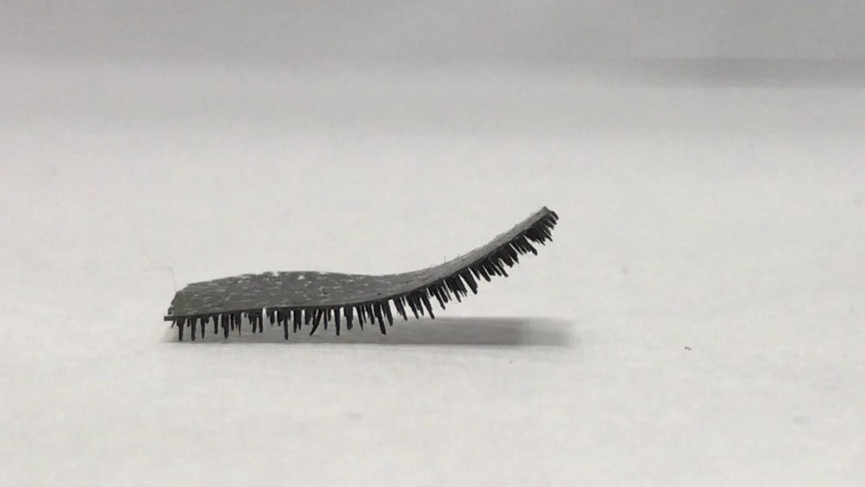One day this creepy robot caterpillar doctor will swim through your veins to keep you alive
Incredible work coming out of Hong Kong and into your bloodstream


Scientists in Hong Kong have developed what might well be the future of drug delivery within the human body: teeny futuristic robotic caterpillar/millipede things.
Just 17mm long, 7mm wide and 1mm tall, with hundreds and hundreds of tiny little legs, the robot is the result of years of development. Controlled by magnets located within each leg, the robot can move in different ways, using either side-to-side or end-to-end movements to propel itself forward. Scientists say the key to the design is the ratio between the length of the robot’s legs and the gap between them.
“Most animals have a leg-length to leg-gap ratio of 2:1 to 1:1. So we decided to create our robot using 1:1 proportion,” says says research director Dr Shen Yajing, whose research into the bot were published in the latest issue of the scientific journal Nature Communications, titled “A Bio-inspired Multilegged Soft Millirobot that Functions in Both Dry and Wet Conditions“.
The limbs taper off to a point, resulting in one-40th of the friction a robot without limbs would have. This means it can move four times the length of its limbs per second (which is only about 3mm per second, but for something that tiny that really doesn’t seem too bad), and the two types of walking mean it can climb over obstacles and carry up to, amazingly, 100 times its body weight. So, yeah, laugh at how slow it is but this a strong robot that’ll one day takeover us all.

This is actually what it looks like - believe it or not, the image at the top is Photoshopped
The thinking behind the whole is that this technology is versatile in that different shaped and sized robots can be easily manufactured and could one day be used to transport medicine within the body.
The legs have been designed to work on surfaced covered in blood and mucus, making tiny-scale internal medical adventures a possibility. “The amazingly strong carrying capability, efficient locomotion and good obstacle-crossing ability make this milli-robot extremely suitable for applications in a harsh environment, for example delivering a drug to a designated spot through the digestive system, or carrying out medical inspection,” says Dr Shen Yajing.
Just think, one day your life might be saved by something that looks like a Welcome mat from a model village. Ok, so it’s hardly as swish as the vein and artery traversing space ship from Innerspacethat a shrunken Dennis Quaid flies around Martin Shorts internal viscera, but none-the-less… we’re one step closer to some crazy future-world of medicine and that’s probably a good thing, and safer than tiny men in space ships, right?
Would you really want this in you?
(Pics; Pixabay, City University Hong Kong)
Latest


Ten things you need to know about Hyrox


Is clubbing actually good for you? We asked an expert







